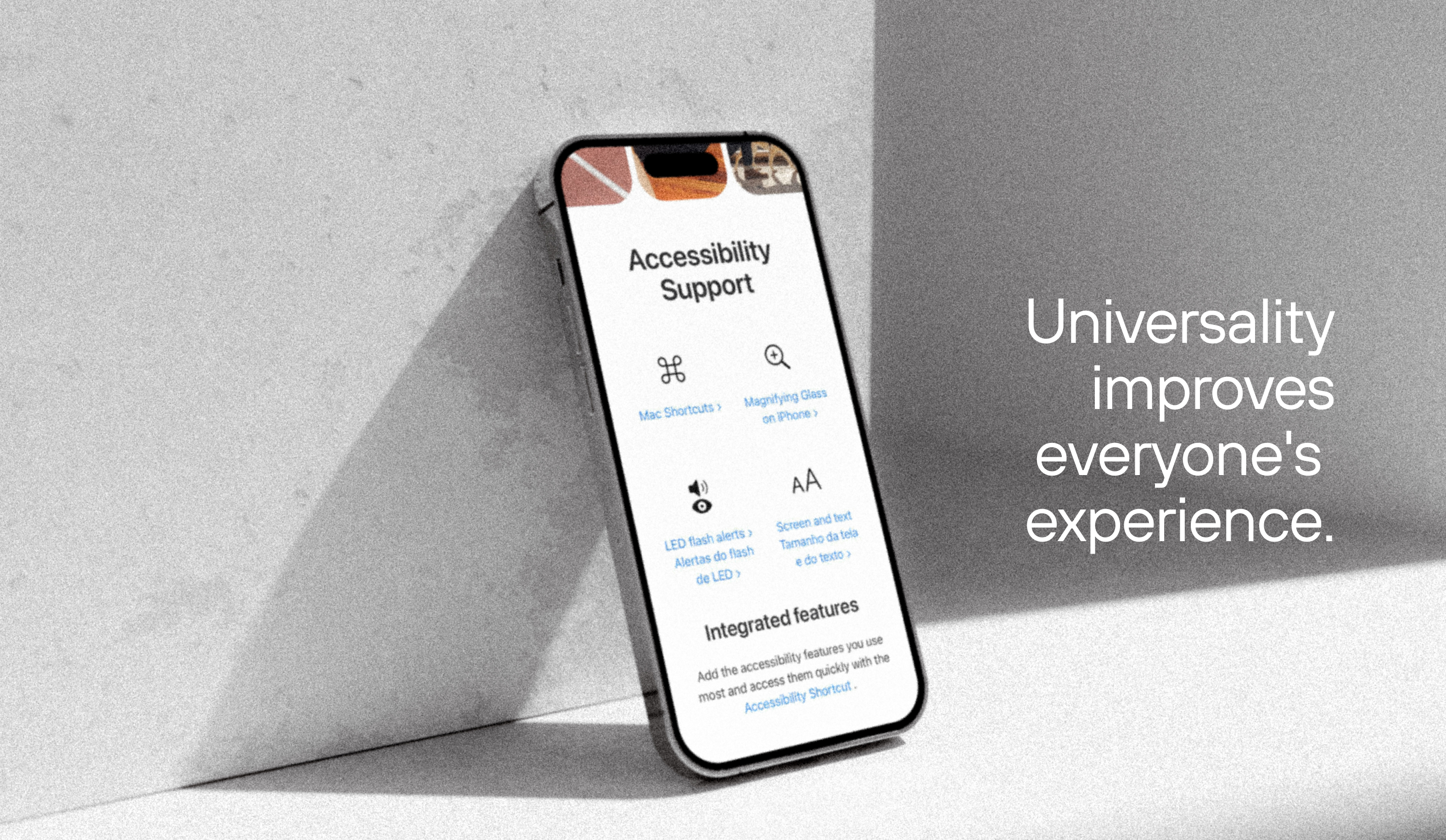
A digital experience goes beyond a person's simple interaction with a website or platform; it encompasses a set of perceptions, emotions, and connections that, when well-orchestrated, generate positive, memorable, and impactful journeys.
In an increasingly competitive and fast-paced market, companies that meet expectations and establish genuine connections between users and brands take the lead. In this context, the 7 essential foundations for creating quality digital experiences emerge as necessary and important strategic pillars.
Let's talk more about memorable digital experiences
But make no mistake: these foundations are not limited to best practices. They are structural principles that ensure the usability of a digital product, its constant value, efficiency, and relevance over time.
Commonly discussed in the fields of UX (User Experience) and UI (User Interface), these pillars apply to websites, applications, and corporate systems, among others. When implemented in an integrated manner, they ensure that the solution is functional, accessible, and, above all, delivers real and continuous value to the user.
At Dexa, we understand that an impactful digital solution is born from the precise application of these 7 foundations. They interconnect organically and are incorporated from the beginning of any digital project, whether in the design of a website or the development of an application.
In this article, we will explore each of these pillars and highlight how they can transform projects, providing digital experiences that delight, engage, and generate impactful results for businesses.
Read also: Digital Experience Platform: use it to craft engaging digital experiences

User-Centricity
User-centricity is perhaps the most important of these 7 foundations because a digital experience begins and ends with the user. Understanding their needs, behaviors, and expectations is indispensable in any project. This involves conducting market research and usability tests to obtain continuous feedback and ensure that the product truly solves real problems satisfactorily.
It's important to apply methodologies such as Design Thinking, Jobs to Be Done, and user journeys to identify hidden opportunities and prioritize solutions that generate value with empathy and focus. A user-centered product should meet immediate demands and build trust and loyalty over the long term.
In essence, user-centered experiences are more intuitive, efficient, and respectful.
Usability
The second principle is usability, which refers to the ease with which users can use the product to achieve their goals, encompassing efficiency, quick learning, and user satisfaction with the interface. A product with high usability reduces friction and provides intuitive and effective interactions, making the experience smoother and more enjoyable.
It is also linked to user retention and error reduction, directly impacting performance metrics such as time on site, conversion rate, and task abandonment. Heuristic evaluations and usability tests are fundamental tools to ensure this continuous quality.
The user needs to perform the desired action; otherwise, the digital product has not fulfilled its role.
Accessibility
Accessibility ensures that the digital experience is usable by all users, regardless of their physical, cognitive, or technological limitations. Practices such as appropriate contrast, font readability, keyboard navigation, and alternative image descriptions are necessary. Ensuring that the product is accessible to different user profiles expands reach and improves the overall experience.
Investing in accessibility is a commitment to diversity and social responsibility. This action contributes to compliance with laws and international guidelines, such as WCAG, and can positively influence SEO indicators, brand reputation, and user engagement.
A good digital experience is always inclusive: it considers the diversity of users.
Consistency
Consistency in a digital product refers to the uniformity of visual elements, interactions, and structure. When users can predict the behavior of an interface, the experience becomes more intuitive and fluid.
This includes consistency in aspects such as visual design, interactions, terminology, and navigation flow, ensuring that the user does not get lost or confused during navigation. This predictability reinforces the solution's credibility, as it conveys care, professionalism, and trust. Consistency also facilitates continuous learning of the interface, reduces the need for support, and strengthens brand identity across all touchpoints.
A solid digital experience cannot admit unpredictability.
Visual Hierarchy and Clarity
Hierarchy is the principle that defines the importance of each element on the screen, guiding the user through visual prioritization. By applying a clear hierarchy, we can guide users to key information, making navigation faster and more efficient. Elements such as size, color, contrast, and positioning help signal the importance of items in the interface.
The user needs to understand the message and maintain smooth navigation. To achieve this, it's necessary to align hierarchy with strategic business objectives, ensuring that priority actions, such as conversions or key interactions, naturally stand out. A good visual structure reduces cognitive load, favors scanability, and improves response time, making the experience more objective and intuitive.
Beyond smooth navigation, it's essential that the user understands the message.
Context & Personalization
The sixth principle relates to adapting the digital experience to the conditions and needs of users. Context involves devices, location, time of day, and browsing behaviors.
For example, in a mobile experience, interfaces need to be responsive and fast, while in desktop environments, the focus may be on content depth. Additionally, context also encompasses the need to adapt content to different stages of the user journey.
This also involves intelligently personalizing the experience based on real usage data. It's about delivering what the user needs, at the right time and in the right way, whether through geolocation, browsing history, or preferences. In an omnichannel context, respecting the whole ensures consistency and effectiveness throughout the journey.
Delivering performance means respecting the context of those accessing your solution.

Evolving Value
The digital experience is a living, adaptable process oriented toward impact. We understand that delivering value doesn't end with the launch of a solution; it starts from that point.
Keeping the digital experience engaging and relevant requires constant and attentive observation of data, active listening to users and their preferences, and the ability to evolve quickly based on real insights.
In practice, what does this mean?
Short improvement cycles (Agile UX)
Frequent small iterations, with tests and updates that generate incremental value gains continuously.
Intelligent use of data (behavioral analytics)
With precision and focus on results, we analyze real usage behaviors, dropout points, heatmaps, and active feedback to identify what needs to evolve.
I'm interested! Connect me with the Dexa team
Measurable value for the business and the user (UX + ROI)
Every experience needs to generate real benefits: whether time saved, frustration avoided, or operational efficiency. To measure this, metrics such as NPS, CSAT, CLTV, and feature adoption are used.
With this perspective, each digital touchpoint ceases to be static and becomes part of a living ecosystem. The experience evolves over time, driven by active listening and analytical intelligence, with a focus on the user and an increasingly clear and strategic UX ROI. This is the foundation for building sustainable, adaptable, and truly value-centered digital solutions.
Value is built with rhythm, listening, and intelligence over time.
Summary of the 7 Foundations
In the table below, we have consolidated some information to provide a clear and objective understanding of how each principle contributes to the success of a digital experience.
| Foundation | Practice | Why It's Important |
|---|---|---|
| User-Centricity | Deeply understand the target audience from the start through active listening, testing, and iteration. | Results in relevant, empathetic solutions aligned with real user needs and expectations. |
| Usability | Create intuitive, efficient, and easy-to-learn interfaces. | Reduces friction, increases navigation fluidity, and contributes to greater satisfaction and engagement. |
| Accessibility | Include elements like contrast, keyboard navigation, alternative texts, and responsiveness. | Ensures the experience is usable by all, expands reach, and reinforces commitment to diversity. |
| Consistency | Ensure visual, interaction, language, and behavior uniformity. | Reinforces brand identity, conveys trust, and reduces the user's learning curve. |
| Visual Hierarchy and Clarity | Organize visual content logically, with contrast and focus, guiding the user's attention. | Facilitates interface scanability and ensures the user easily finds what they need. |
| Context and Personalization | Adapt the experience according to device, location, channel, and journey stage. | Increases information relevance and maintains experience coherence across different environments and channels. |
| Evolving Value | Continuously iterate, measure results, and deliver value over time. | Ensures the digital experience evolves based on data, enhancing impact and solution longevity. |
Human and Lasting Solutions
A positive digital experience emerges from the harmonious application of elements like design, content, technology, and empathy. Building satisfying digital experiences is more than following a set of rules or applying the foundations in isolation: it's about integrating real user needs with functional and meaningful solutions.
The true differentiator lies in creating digital environments that respect users' time and expectations, offering interactions that add value at every stage. When design is driven by a clear purpose and strategic vision, the result is a resolute, attractive platform that continuously engages the audience.
Ensure Memorable Experiences
Designing with purpose involves establishing a genuine relationship with the user, based on trust and the continuous delivery of value. With each interaction, the digital experience should reflect the brand's commitment to placing the user at the center, ensuring their expectations are met transparently and engagingly.
Consistently applying the 7 foundations of digital experience ensures better retention, engagement, and conversion rates. As a result, the user returns and becomes a loyal advocate for your brand.
Are you ready to create digital experiences that will increase your business's profitability?
